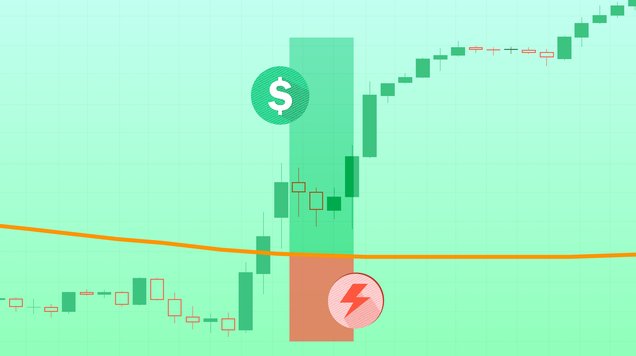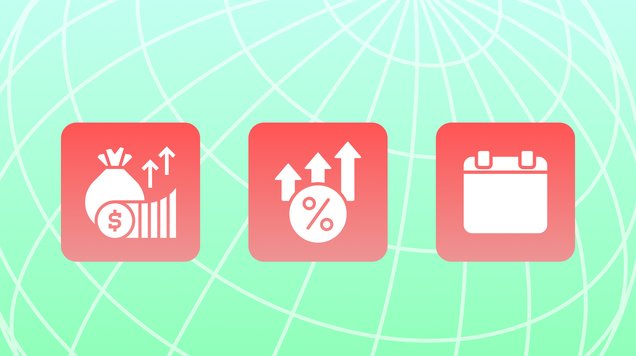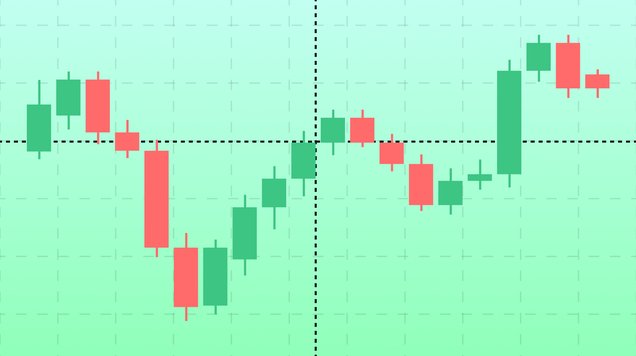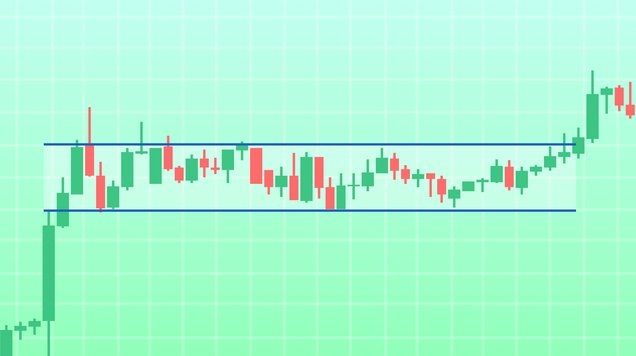Swing Trading 101
Learn the basics of the swing trading strategy and how to use it to capture profits in financial markets.
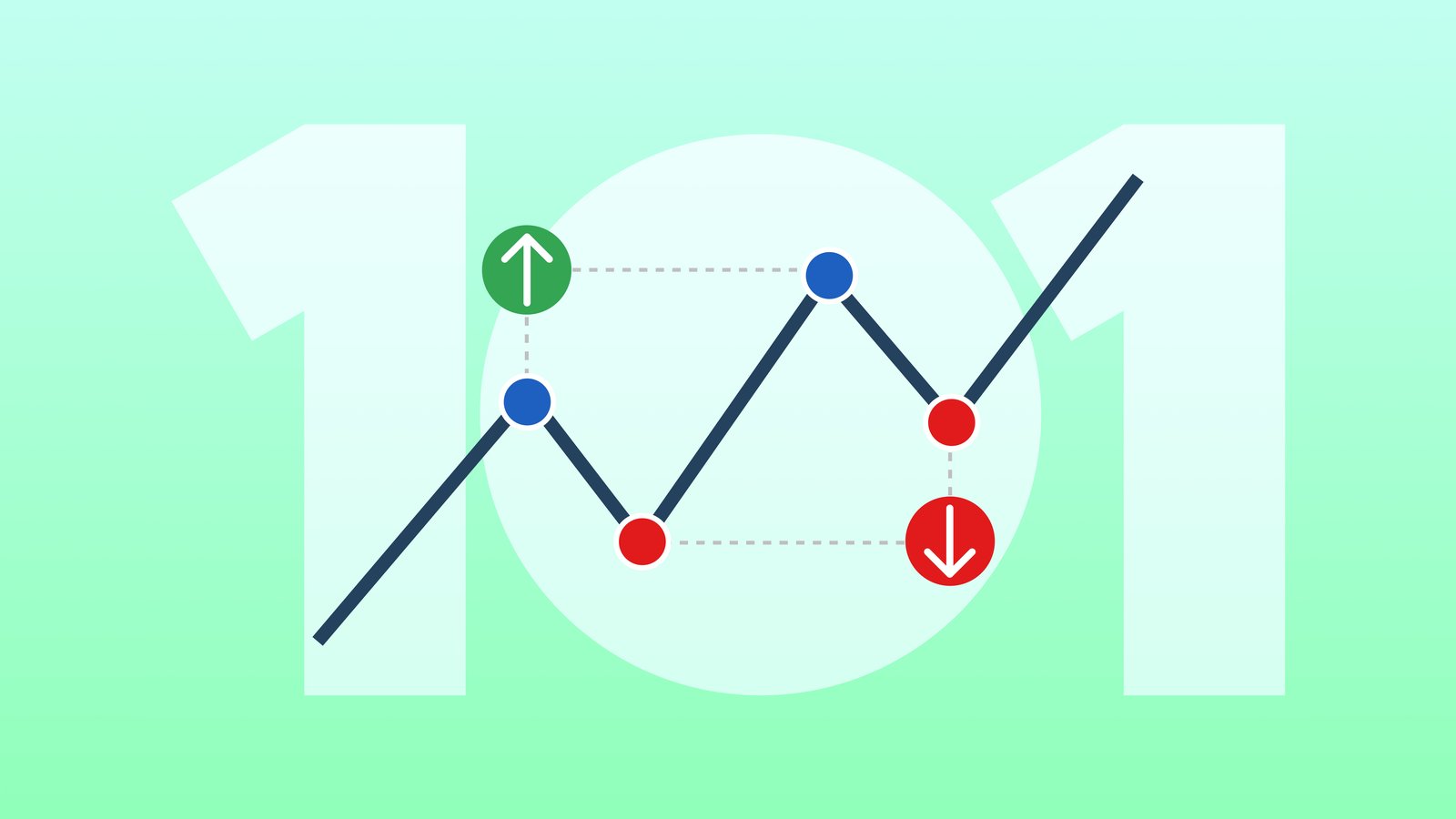
Swing trading strategy focuses on capturing profits by trading short to medium-term price swings of a financial asset
Swing traders use technical indicators, such as Moving Averages, to pinpoint an optimal time to enter a position and make most of the price movement
Including factors of fundamental analysis, such as earnings report and economic data releases, provides swing traders with a more comprehensive view of the market and its possible movements
Swing trading is less time-consuming than short-term trading strategies and can be applied to all assets, but traders should consider risk management, position sizing and diversification to reduce risks involved in the strategy
Introduction to swing trading
Swing trading is a trading strategy that aims to capture short- to medium-term price movements in financial markets.
Swing traders try to establish and capitalise on price ‘swings’ within the current trend and enter the market at the right time. Price swings can be caused by variety of factors including economic data releases, news events, or shifts in market sentiment. Swing traders use technical analysis to establish the optimal moment to open long or short positions.
In addition to trend following, swing traders can also adopt the approach of counter-trend trading. Counter-trend traders aim to profit from reversals instead of trading to the direction of the current trend.
Considered as a medium-term trading strategy, swing traders tend to hold positions from couple of days to couple of weeks. Therefore, the strategy falls between day trading and trend or position trading.
Swing trading is especially popular between stock and forex traders because stock and forex markets usually have enough volatility and liquidity to create profit opportunities for swing traders. However, the strategy can be applied to other assets too, such as commodities, indices, and ETFs.
Market analysis for swing trading
Swing traders mainly use technical analysis to spot trading opportunities and identify optimal entry and exit strategies for a position. Moving Averages, Moving Averages Convergence Divergence and Relative Strength Index are examples of commonly used technical indicators by swing traders.
Simple Moving Average (SMA) is an average of prices over a specified time period and can be calculated based on closing, opening, minimum or maximum prices. However, it’s common to use closing prices for the calculation. Exponential Moving Average (EMA) puts more significance on the most recent data points, providing clearer signals about the trend. Swing traders can use EMAs to identify entry and exit points.
Moving Average Convergence Divergence (MACD) is a trend-following indicator that is calculated by subtracting 26-period EMA from 12-period EMA. MACD, with a Signal Line that is a moving average of the MACD, provides technical signals to buy or sell.
Relative Strength Index (RSI) is a momentum oscillator that gives a value between 0-100. It indicates if an asset is oversold or overbought, providing traders with opportunities to enter the marker. If the value is under 30, the asset is oversold and if it’s over 70, then the asset is overbought. RSI can help traders to validate trends and trend reversals and provide buy and sell signals.
Even though swing trading relies on technical analysis, it can be beneficial for traders to combine fundamental factors to their analysis to get a more comprehensive view of the market. That’s why swing traders often use a combination of technical and fundamental analysis.
Earnings reports, economic data releases and geopolitical events are examples of things that can impact price movements and using them as a part of your market analysis can provide useful insights about current and future market movements.
Is swing trading the right strategy for you?
There are plenty of trading strategies to choose from so could swing trading be the right one for you? Let’s have a look at things to consider before choosing swing trading and what benefits the strategy has.
As swing traders hold positions longer than day traders, it’s a suitable strategy for traders who don’t have the time to be constantly monitoring their trades and opening new positions. However, swing trading requires patience as trades are held open for longer than a day. Swing traders need to be able to remain calm, even if the price momentarily moves against them.
Swing trading is also a suited strategy for traders who wish to trade several products as it can be applied to all asset classes. Diversification of your portfolio reduces the overall risk of your portfolio but overtrading and holding too many positions at the same time exposes you to risks like increased transaction and commission fees.
Swing trading is a suitable strategy for beginners as it’s less stressful and time-consuming than short-term trading strategies which require quick decision-making and constant monitoring of open positions.
Remember that finding the most suitable strategy to match your trading goals requires testing and you can also combine different strategies.
Risk management as a part of successful swing trading strategy
To succeed in swing trading, it’s crucial to acknowledge the risks and prepare for them using risk management tools, such as stop loss orders, to protect your funds. Here are some risks that swing traders should take into consideration.
Volatility risk and market risks are one of the main risks involved in swing trading. Unpredictable price movements and increased volatility caused by factors such as economic data releases, geopolitical events and unexpected news can lead to significant losses. Position sizing, diversification across different asset classes and risk management help traders to minimise risks.
As swing traders hold their positions overnight and sometimes over weekends too, their positions are exposed to price gaps. Price gaps mean that an asset’s price changes significantly when there is little trading or markets are closed.
Lack of discipline and impact of emotions can cause swing traders to make uninformed and reckless decisions and put their capital at risk. Thorough analysis of the market and a strategy with clear entry and exit points reduces the risk of emotional trading.
How to start swing trading
Here are the simple steps of how to trade using the swing trading strategy.
- Identify a volatile and liquid market: The first step is the identify a product that currently has enough volatility and liquidity to provide interesting profit opportunities.
- Plan entry and exit points: To plan your entry and exit points, perform market analysis using technical and fundamental approaches. Use technical indicators and trading tools to help you conduct a thorough analysis to make informed decisions.
- Implement risk management: Prepare your risk management strategy and protect your trades by adding risk management tools, such as stop loss orders on the trading platform. You can also use tools like take profit orders to help you lock in potential profits.
- Monitor and review: After entering the market, monitor your trade for unpredictable price movements and make adjustments if necessary. If you have set a stop loss order, your position will automatically be closed in case of an unfavourable price move but you can also choose to close your trade manually at any point if you wish to exit the market. Notice that you can only close positions when the markets are open.
If you’re new to trading, you might want to practice swing trading with a risk-free demo account before entering markets with real funds.
